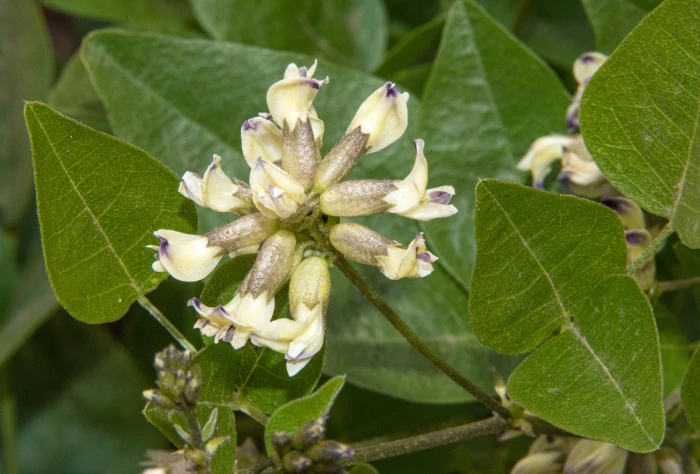California Tea
(Rupertia physodes)
California Tea (Rupertia physodes)
/
/

Don Loarie
CC BY 4.0
Image By:
Don Loarie
Recorded By:
Copyright:
CC BY 4.0
Copyright Notice:
Photo by: Don Loarie | License Type: CC BY 4.0 | License URL: http://creativecommons.org/licenses/by/4.0/ | Rights Holder: Don Loarie | Publisher: iNaturalist | Date Created: 2022-05-11T14:21:21-07:00 |






















Estimated Native Range
Climate Requirements for Pasadena, Texas
| This Plant | Your Site | Plant Suitability for Your Location | ||
|---|---|---|---|---|
| • Precipitation | 9" - 123" | 50" | Aquatic | Aquatic |
| • High Temp. | 65°F - 99°F | 92°F | Your summer temperatures are normal for this plant. | Excellent |
| • Low Temp. | 7°F - 46°F | 44°F | Your winter temperatures are normal for this plant | Excellent |
This plant may not grow well at your location - your precipitation is too high.
Summary
Rupertia physodes, commonly known as Forest Scurfpea and California Tea, is a deciduous perennial herb native to the chaparral and oak woodlands of California, extending north through the Cascade Range into Oregon, Idaho, and British Columbia. It typically forms low, bushy mounds with branches that can be recumbent, creating a dense ground cover. This species is well-adapted to dry, open areas, often found on the edges of woods and prairies. It reaches a typical height of 1-3 feet (0.3-0.9 meters) and spreads to about the same width. Forest Scurfpea produces small, pea-like flowers from late spring to summer, which are white to cream-colored with hints of green or purple. The flowers are modest in size but can be quite numerous, creating a delicate display. After flowering, the calyx grows into a large, expanded conical collar around the one-seeded pod, which is a distinctive feature of the plant.
Forest Scurfpea is valued for its ability to stabilize soil and provide erosion control on dry slopes. It is also used in native plant gardens and restoration projects for its drought tolerance and wildlife value, as it provides food for native pollinators. In cultivation, it requires minimal maintenance once established, thriving in full sun to part shade and preferring well-drained soils. While it is drought-tolerant, occasional watering during prolonged dry periods can keep it looking its best. There are no widely recognized cultivars of this species in the horticultural trade. Potential problems include root rot in poorly drained soils and susceptibility to pests like aphids. It is not known to be invasive when grown outside its native range.CC BY-SA 4.0
Forest Scurfpea is valued for its ability to stabilize soil and provide erosion control on dry slopes. It is also used in native plant gardens and restoration projects for its drought tolerance and wildlife value, as it provides food for native pollinators. In cultivation, it requires minimal maintenance once established, thriving in full sun to part shade and preferring well-drained soils. While it is drought-tolerant, occasional watering during prolonged dry periods can keep it looking its best. There are no widely recognized cultivars of this species in the horticultural trade. Potential problems include root rot in poorly drained soils and susceptibility to pests like aphids. It is not known to be invasive when grown outside its native range.CC BY-SA 4.0
Plant Description
- Plant Type: Herb
- Height: 1-3 feet
- Width: 2-5 feet
- Growth Rate: Moderate
- Flower Color: White
- Flowering Season: Summer
- Leaf Retention: Semi-deciduous
Growth Requirements
- Sun: Full Sun, Part Shade
- Water: Low
- Drainage: Medium, Fast
Common Uses
Bee Garden, Drought Tolerant, Low Maintenance
Natural Habitat
Native to chaparral and oak woodlands of California, extending through the Cascade Range into Oregon, Idaho, and British Columbia
Other Names
Common Names: Coulter’s Mat, Forest Scurfpea, Coulter’s Snakeweed
Scientific Names: Rupertia physodes, Hoita physodes, Lotodes physodes, Psoralea physodes, Psoralea physodes
GBIF Accepted Name: Rupertia physodes